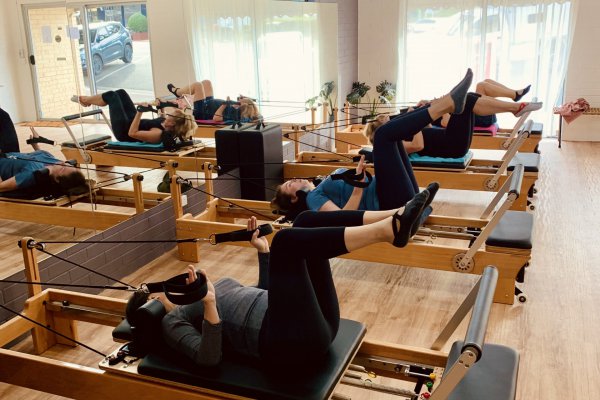No matter what style of Pilates you do there will be some terminology that is consistently used across the board. For a beginner, it is great to understand these simple terms to help you get the most out of your pilates training. Now, most of it relates to your positioning, breathing, and muscle contractions but remember that in Pilates we train the body as one unit, which means that all of these terms will intertwine together and be used all at the same time.
Here are the most common terms used in pilates training, you don’t need to remember all of these to do Pilates but it’s a great idea to start grasping each term and how it applies to you.
Neutral Pelvis:
A neutral pelvis is when your pelvis/spine sits in its natural position ie. with a small curve in your lumbar spine
Anterior Tilt/Posterior Tilt:
The tilt of your pelvis refers to the angle at which your pelvis sits and is aligned. A posterior tilt refers to the top of your pelvis tilting backward, equating to having a ‘flat’ lumbar spine. An anterior tilt refers to when the top of your pelvis is tilting forward, equating to having an increased curve in the lumbar spine.
Imprint:
Imprinting is very simple and refers to the action or movement of ‘pressing’ or ’stamping’ down a portion or part of the body into the floor ie. imprinting your lumbar spine into the floor while lying on your back.
Tabletop:
Tabletop refers to the position you have your legs in when you are on your back and is usually a starting position for other exercises. To be in this position you would be lying on your back with both legs in the air with your hips and knees both bent at 90 degrees. In this position, you should be able to maintain a neutral pelvis.
Pelvic Floor:
The pelvic floor is a group of muscles and ligaments that support the bladder, uterus (womb), and bowel. Learning to engage this muscle correctly is important and can be learned during pilates. However, an example of how to do this would be imagining you were trying to stop the flow of wee while going to the toilet. More on this another time.
Engage/Activate:
You might hear engage or activate during a pilates session, this simply refers to the contraction of a muscle. By engaging a muscle you are actively trying to contract or ‘squeeze’ a specific muscle.
Lateral Breathing:
Lateral breathing is when you breathe laterally into your lungs instead of down into your stomach or abdomen. More on this in our blog – Breathing for Pilates
Nathan Spring




